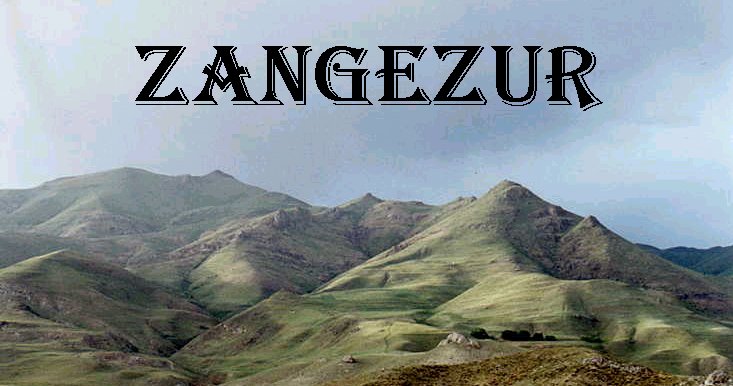

| Click Here to Return to Home Page |
Zangezur (zang'-eh-zoor) is the southeastern and most mountainous region of Armenia. It consists of a maze of gorges and river valleys that cut through its towering mountain ranges. Its land is rich in ores and also contains dispersed fields and orchards in the valleys and mountain sides.
The rough terrain has shaped the character of the Zangezurian who is bold, rugged, and proud. Historically, the Armenians of Zangezur have never been conquered by outsiders including the forces of Tamerlane and Genghis Khan.
According to local legend, a Zangezurian Prince ordered his people to bury their treasures (gandz in Armenian) in a mountain (sar) in preparing for a defense of his land against foreign invaders. Thus, the name Gandzasar is given to one of Zangezur's most famous mountains. It stands at 7500 feet above sea level and is representative of many of the mountains in Zangezur because it is rich with molybdenum, copper, and iron ores.
The two biggest mining centers in Zangezur are Kadzharan and Kafan. Kadzharan means "land of the brave" and its land is rich in copper-molybdenum, a rare ore that was highly valued by the Soviet Union. Similarly, Kafan's copper has historically been an important resource and is well known for its excellent quality. Copper has been carried out on the back of camels from Zangezur to foreign countries since the mid 19th century as the wealthy mine owning families exploited the poor laborers.
Kafan was also the capital of the historical Sunik region which bordered the Van, Ararat, and Artsakh (a.k.a Karabagh) regions. Sunik was a Armenian cultural center between the 4th and 12th centuries. It was the site of both Glatsor and Datev Universitites where famous Armenian manuscripts were created, and scribe centers and monasteries were built.
| Click Here to Return to Home Page |
This Page has been visited times.